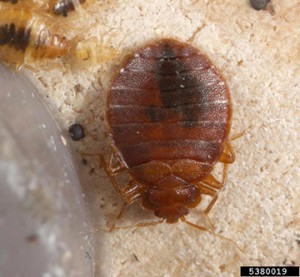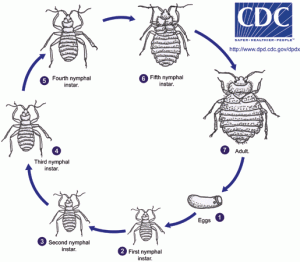The EPA recently hosted a well-attended webinar on Bed Bugs in Schools. For many school administrators, it has been a non-issue. After all, we aren’t supposed to sleep in school. Childcare facilities are at a higher risk, and we’ll speak directly to that in another post.
Bed bugs (Cimex lectularius) are drawn to the presence of blood through our carbon-dioxide breaths and warm bodies, and will happily move through a building to find us. That includes finding their way from room to room, or apartment to apartment, through walls. Luckily for us, students and staff are rarely ‘in the right place at the right time’ for bed bugs. Luckily for them, they like to travel in our belongings.
A student or staff member who has bed bugs at home can inadvertently bring them to school. If you think this is a problem tied to family income or a home’s cleanliness, think again. Given the mobile nature of our society, bed bugs are happy to find a blood meal in any home.
The webinar’s presenters,
- Dini Miller, Virginia Tech’s Urban Pest Management Laboratory
- Susan Jennings, EPA Public Health Liaison
- Marcia Anderson, EPA Center of Expertise for School IPM
emphasized a few key points. First and foremost was don’t panic!
If you find a bed bug in school, please understand there is a big difference between an incident (finding a bed bug) and an infestation (finding multiple bed bugs…likely including females). All bed bugs eat blood meals, but an egg-producing female begins an infestation when she finds food and shelter (resting humans and their blood, and a nice dark crevice or fold in upholstery). An infestation tends to be hidden within a few feet of the food source, such as headboards, box springs, wall sockets, and inside upholstered furniture.
Want to know more? Read Bed bugs are Back!
Just as in any aspect of integrated pest management, your first challenge is to identify the pest, and that means capturing it. Bed bugs are often misidentified and the last thing you want to do is create a problem where there is no problem. There are different ways to collect a specimen. Grab it in a tissue and place the whole thing inside a lidded jar, an empty prescription container, zipper-slide storage bag, or disposable coffee cup with a lid. (for examples, see one of our illustrated guides.) You can use tweezers or sticky tape as well. Adults are about the size of an apple seed. Warning. Bed bugs move fast. If you haven’t already done so, immediately contact the person in your school or district who is in charge of pest management. Place the sealed bag or container in a freezer (keep it there at least 30 minutes).
You do have someone who makes pest management decisions, right?
What about your pest management protocol or policy? Does it have a decision-tree for dealing with bed bugs?
If you don’t have a written policy on bed bugs or other pest control decisions, you are setting yourself up for problems. Let’s remedy that. Stay tuned. the NY State Integrated Pest Management program has been at this for many years, and we’ve created or gathered the resources you need. Throughout January, we’ll focus on increasing your knowledge of this pest.
Here’s another resource: Preventing and Getting Rid of Bed Bugs Safely, from the NY City Dept. of Health and Mental Hygiene.


